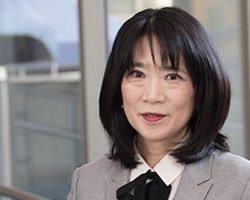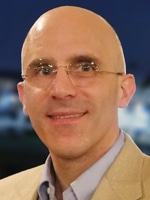Valerie Neff Newitt
April 2018—Nearly one year after the FDA cleared the Philips IntelliSite Pathology Solution for primary diagnosis, Philips is reporting worldwide momentum for the adoption of digital pathology. Last year, it helped two labs in Austria—Pathology Institute in Hall and Pathology Institute at Tirol Kliniken—fully digitize their workflows. In North America, “adoption is accelerating as the U.S. catches up with the rest of the industrialized world in terms of digital pathology,” says Marlon Thompson, PhD, MBA, vice president and general manager for digital pathology solutions, Royal Philips. Worldwide, he says, more than 10 “innovative pathology labs are working 100 percent with digital pathology for their current pathology workload.”
But large-scale adoption in the U.S. may await a few remaining solutions and steps, among them next-generation scanning systems, improved viewing software, solid infrastructure, and an open versus a closed system approach. Full acceptance of the power of artificial intelligence could well be the biggest push of all.
Dr. Thompson calls FDA clearance “a clear differentiator for Philips” and says it has led to movement across all sectors of the U.S. market—clinical institutions, comprehensive cancer centers, academic medical centers, and other laboratory groups. “The customers Philips has engaged fundamentally believe they need our platform because it allows pathologists to feel confident in the primary diagnosis,” Dr. Thompson says.

’The best system for us is the one that fits with our workflow and best scans our pathology materials.’
— Yukako Yagi, PhD
The downstream economic advantages of digital pathology have not been lost on users, he adds. “Many customers have been able to decipher and appreciate the value proposition of digitization in terms of the efficiency it delivers and translate that to labor savings and ultimately cost savings, which are quite impressive in the U.S. We saw that in the European market where we had early entry into digital pathology. Now the U.S. is experiencing efficiency gains for itself.”
Yet pathology departments appear to be moving slowly and cautiously. Jerome Clavel, general manager of Leica Biosystems Pathology Imaging and a founding member of the Digital Pathology Association, explains why. “While FDA clearance [for primary diagnosis] is going to be necessary, it also is not sufficient for massive adoption.”
Clavel, who offers high praise to Philips for its clearance achievement, says obtaining clinical clearance is one of Leica Biosystems’ top priorities as well. He describes FDA clinical clearance as one of three pillars on which broad adoption of digital pathology will ultimately be seated.
“FDA clearance really is the first leg of the stool. Another leg is next-generation scanning systems, not just fast enough to handle the volume but also simple and easy to use, with minimal human intervention for very easy deployment in the lab,” he says. “The third leg is a leap forward in viewing software. This means we must be able to handle massive amounts of data and render very large images smoothly to enable a seamless workflow.”
“Adoption will be a journey with many stops,” he says, pointing to the uses for digital pathology other than primary diagnosis. “It could be just having quick access to the slides for reference or being able to share with a colleague across the lab or across the world. It’s not all about clinical clearances. There are multiple research and teaching scenarios that do not involve clinical usage, not to mention safe archival and easy retrieval of slides.”
Yukako Yagi, PhD, director of pathology digital imaging for the Warren Alpert Center for Digital and Computational Pathology at Memorial Sloan Kettering Cancer Center, is helping to lead an expanding digital pathology program, one that started with a single whole slide imaging scanner in 2006 and has grown to an installation of 10 WSI scanners. (LIS integration began in 2015.) The systems in use are primarily Leica Aperio AT2s. MSK currently creates about 30,000 digital slides per month—composed of in-house surgical pathology cases, cytology cases, hematopathology cases, consult cases, and frozen sections—selected by pathologists and flagged for digital archive by a sticker attached to the slide. To date, about 500,000 digital slides are available. The goal this year is to create 40,000 digital images per month and start scanning MSK’s glass archives—about 4 million slides. All scanned data are saved at MSK’s data center in New Jersey.

‘Many customers have been able to decipher and appreciate the value
proposition of digitization.’
— Marlon Thompson, PhD, MBA
“So far data collected at MSK show improvement in signout time, in having digital images available for review of prior material and consultation, and there is an opportunity to decrease the cost of slide retrieval by a lot,” says Dr. Yagi, a member of the Digital Pathology Association’s board of directors.
Is having an FDA-approved platform essential at this juncture? “Yes and no,” she says. “If we want to use it for primary diagnosis, we will have to have the FDA-approved system. However, to integrate a WSI system with our laboratory information system takes time, effort, and cost to complete, but in our case is very important. We anticipate that the FDA-approved scanner and the ‘best fit’ scanner in our current workflow may not always be the same. Based on our experience at MSK, the best system for us is the one that fits with our workflow and best scans our pathology materials.”
For now, primary diagnosis is not in the digital pathology playbook at MSK, but Dr. Yagi and the MSK team are eager to participate in those discussions, she says, “and ultimately we want to do what’s best for patient safety, safe practices, and optimal patient care.” Today, she and the MSK pathology team, having gained much experience, are focused on building the framework and evaluating and validating new scanners. They’re also developing models for using archived and annotated data for computational pathology; exploring, evaluating, and optimizing new technologies, including 3D imaging; and improving system integration.
J.Mark Tuthill, MD, division head of pathology informatics at Henry Ford Health System in Detroit, agrees that adoption can and should come only after a robust infrastructure is built on which an institution can balance the three-legged stool of digital pathology. And that, he says, takes time.
“Our adoption is still very nascent,” Dr. Tuthill says. “We have had a couple of systems running for two years that we use for a variety of ad hoc processes, particularly tumor boards and clinical and resident conferences. It is a major improvement in what we’ve been able to do in those areas. We find we need to move ancillary studies—immunostains, trichrome stains, iron stains, etc.—and get more bang for our buck moving digital images for those types of assets and workflow than we would for diagnostic tissues.”
For primary diagnosis, uptake is slow. “One of the key problems is that there is only one system that is FDA approved out of the box for primary diagnosis,” Dr. Tuthill says. “Even with that system approval, anyone who wants to adopt it and use it would have to go through local validation, do comparative and consensus work to make sure that use of the system in its environment is appropriate.” While other system components that were not approved as part of the Philips system clearance can be pressed into service if a laboratory undertakes a laboratory-developed solution, “it requires a lot of work and validation time.” For now Henry Ford pathologists are using digital pathology for the clinical conferences, education, and distribution of ancillary study slides—“things that don’t require the FDA’s diagnostic approval,” he says. Their plan is to use it for secondary diagnosis and ancillary studies. “Then the next phase, down the road a bit, will be to see how we can use it for primary diagnosis.”
In the meantime, Henry Ford is taking steps to ready its infrastructure. “Even with an approved system, if you have not integrated it into your daily workflow in a way that allows you to push materials through the systems very rapidly, you will not reap the high-throughput, high-volume, high-efficiency benefits of the technology,” Dr. Tuthill says.
The Henry Ford team has interfaced its digital systems with the laboratory information system so that barcodes that are read on the whole slide imager tell the system who the patient is, what tissue is being scanned, and what the stains on that tissue are so the system has awareness of the context of the material.
“Regardless of how high the quality of the digital picture is, it is moot if you have the wrong patient,” Dr. Tuthill notes. “Instead of being deeply involved in validation of a closed-box system for primary diagnosis, we first have to set our systems up for success so that we always have the right patient.” High-fidelity barcodes drive the digital pathology workflow. “We are not manually typing in names and medical record numbers. In fact, labeling fidelity has been moved all the way out to the order with an electronic orders interface to the EMR system.”
The importance of this preparation is something often overlooked when digital solutions are set up, he says. “There is already a lot of focus on the imaging quality. But we’ve tried to move the bar by integrating these systems into the workflow of an LIS and, if possible, the patient identification processes. Most of the digital pathology solutions that have been deployed up to now have not been interfaced.”
It is not hard to achieve the necessary interfaces, Dr. Tuthill says. “We were the pioneers and got vendors aboard. So the next people who come along will have a much easier time of it. They just have to plan interface into projects and ask vendors, ‘Will your system be able to read the barcodes that our LIS generates? Will it be able to interface with our LIS?’ Vendors now are paying attention to these next-level requirements. They know that our success is their success and that we all need to do this right.”
Slow adoption doesn’t surprise Michael Montalto, PhD, president of the Digital Pathology Association and executive director and head of translational pathology and biomarker technologies at Bristol-Myers Squibb. “FDA approval for primary diagnosis is not enough to create rapid adoption of the technology. What would be enough? That is the million-dollar question,” he says, “but we probably don’t need to overthink that. In any technology, it becomes a simple cost-value equation—whether or not something costs too much for the value it provides, period.” His sense is that the digital pathology technology is expensive in the current health care climate of restricted dollars. “And the benefit may simply not outweigh the cost, not only measured in dollars but also infrastructure and time to implement.”
Dr. Montalto believes enormous value eventually will be seen in the artificial intelligence that can be attached to digital imaging and that its worth might be most evident and enticing not to pathologists but to oncologists. “The face value of AI to pathologists would be either a more rapid diagnosis because a computer is helping with or actually doing the diagnosis, or a decrease in labor and the cost associated with a diagnosis,” Dr. Montalto says. “Workflow efficiencies and faster diagnoses—who is going to pay for just that? Is that enough?”
In his view, no. “I believe the digital pathology community is selling to the wrong constituency. It will be the oncologists in the future who will be interested in a technology like this, and will ask their pathologists to use it.”
With more and more work in immuno-oncology, a space in which Dr. Montalto works, oncologists are being bombarded with data that demonstrate the power of the immune system against certain cancers. “Oncologists will be increasingly interested in having a pathology report that provides quantitative information that can be delivered through digital pathology.”
“They appreciate that recognizing the immune phenotype in the context of a tumor and a tumor’s microenvironment is valuable to them,” he says. “Knowing how many T cells are in a tumor versus how many are not matters to them, and determining if these specific cells will respond to a particular treatment is invaluable. A computer can deliver that information much better than a human. Humans can’t repeatedly identify types and amounts of immune cells in a tumor. But a computer can do that really well.”
Dr. Tuthill agrees that image analysis will be “a huge driver.”
“In the space of 10 years,” he says, “digital pathology will be the primary way we interact with tissue-based images because of all the things we can do with a computer that we cannot do with a microscope, like cell counting, morphometrics, finding similar cases through a database image search, superimposing slides, and doing analytic measurements that we cannot do on a microscope. We will move from subjectivity to objectivity. But right now pathologists using microscopes are just starting to get the hint.”
Dr. Montalto thinks a thrust toward adoption also will occur “when we think about value in medicine being driven by treatment outcomes.

‘Oncologists will be
increasingly interested in having a pathology report that provides quantitative information that can
be delivered through
digital pathology.’
— Michael Montalto, PhD
“For some reason the digital pathology community has been skittishly avoiding the question as to what real clinical value digital pathology provides. But having the ability to understand a tumor and know if patients will respond to a treatment based on information from a glass slide that can only be gleaned from AI—that becomes powerful.”
When asked what the impact of digital pathology will be on immuno-oncology, Dr. Montalto says, “It will be pretty great, but I think the opposite is also true. Immuno-oncology will also have a huge impact on digital pathology, the direction in which it moves, the rate of adoption, and how we think of business models differently going forward, compared to the way we’ve thought about them over the last five or 10 years.”
Another obstacle to be overcome before more widespread adoption of digital pathology for primary diagnosis is the FDA’s “closed box” approval that tends to preclude interoperability of equipment.
“The current approval process resulted in a closed-system approval,” Dr. Tuthill says, “meaning that end users must use the exact components Philips had approved, even down to the level of the monitor or potentially the video cards.” That can wreak havoc on daily laboratory operations. “The reality is we may have pathologists working on several different monitors. And over the course of time, hardware expires and needs to be changed out. Must we do a revalidation every time we add a different monitor type or add a new computer?” If so, he says, that would mean hundreds of hours.

Dr. Tuthill
Dr. Tuthill believes it is incumbent on the pathology community to articulate the specific FDA requirements that are untenable in the real world. For example, while a monitor is important, it likely does not have the same impact on the validity of the whole system as does the scanner.
“Many people are taking the closed-system approach and trying to fit all of the variables in place and do the validations. That will be the case for two or three years,” he says. But then components will start to vary because of replacement requirements or different systems coming online. “By then we will be able to demonstrate which components need to be constrained and controlled as opposed to the components that may be able to have a little more exchange and variation. And hopefully the FDA will respond by changing its closed approach.” That, Dr. Tuthill says, will speed the rate of adoption.
Leica’s Clavel, too, recognizes “the pathology community is almost allergic to any kind of proprietary standards or closed systems that lock them in.” Locking in customers may be attractive to a vendor, he says, but not if the customers react strongly to it. Users are therefore best served by being vocal about their expectations.

Clavel
Adoption will also depend on the business need for digital pathology in a department. “Digital pathology is already here and already in play, and it will certainly change the paradigm of how we practice moving into the future,” Dr. Tuthill says. “But exactly how you leverage this technology must depend on supporting the business needs that you have in your lab. And whether you are talking digital pathology in your gross room, or digital pathology whole slide imaging for primary diagnosis, it is the business drivers that will force your hand and dictate where you are on the adoption curve.”
Clavel expects those business drivers to continue to change as the technology improves. “We always tend to overestimate the speed of adoption of new technologies, yet we underestimate the extent to which they will change the way people work when fully adopted,” he says. “Think of smartphones. It actually took a decade and a half for them to be fully adopted since the first forays in the early 1990s. Yet today they’ve opened up a whole new world of possibilities. It has taken time for digital pathology to get traction, and it will take more time to gain full adoption. But once we get there, we might enable things that haven’t even been imagined yet.”
For those who may have reservations about the trustworthiness of the artificial intelligence that Dr. Montalto believes can improve patient outcomes and thus bring digital pathology into full acceptance and adoption, Dr. Montalto says: “Take a step back and realize that AI has already been a part of our lives for a long time. AI has been used to fly planes on automatic pilot and is being used in cars for safety features. We are exposed to AI all the time, and we trust it because it works. Pathology needs to become friends with AI. That’s an important message.”
“Certainly we need more research, more validations, and more investment,” he adds. “But we also must find the value in improving outcomes, not just workflow and efficiencies.”
[hr]
Valerie Neff Newitt is a writer in Audubon, Pa.